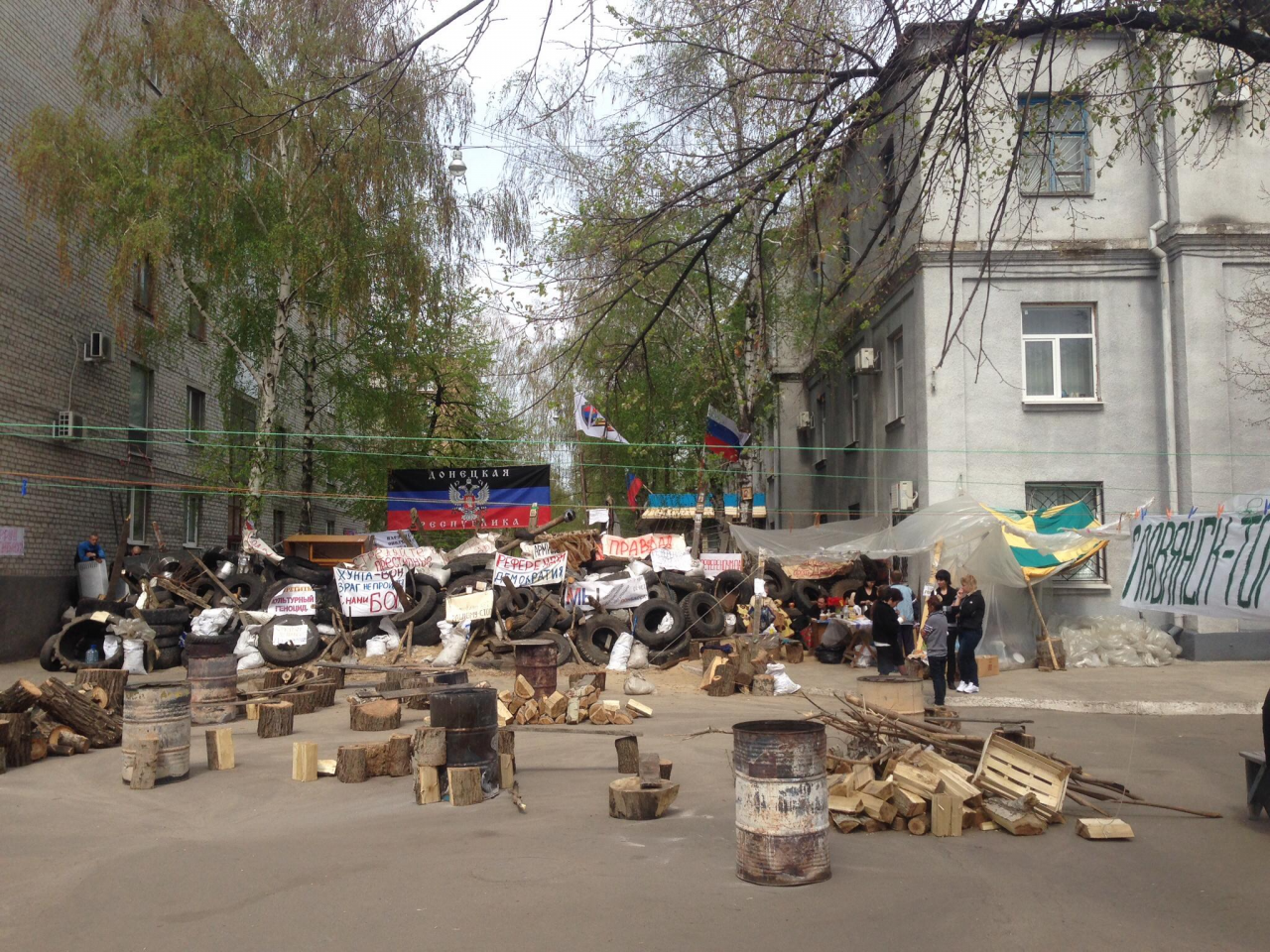
Oleksandr Reznik,
Head of the Sociopolitical Processes department at Institute of Sociology of the National Academy of Sciences of Ukraine, Head of Center of Political Sociology
For "Democratic Initiatives"
Following the Revolution of Dignity, Ukrainian authorities initiated a series of reforms and political decisions that, as expected, caused an ambiguous reaction from the public because the democratic transition and the changes in numerous spheres affected the interests of different social groups. The rational evaluation of the impact of reforms on one's life was not the only factor that determined the perception of reforms by the general public - in fact, the relationship of the changes to one's identity was also of concern. That is because the citizens evaluate the consequences of the reforms based on their own political, economic, and sociocultural preferences.
The goal of the study is to understand the perception of the governmental reforms introduced after 2014 by the different social groups. Thus, the study accomplishes two tasks: 1) determines the perception of reforms by the Ukrainian society; 2) analyzes the perception of reforms among the various sociodemographic groups of Ukraine’s population. The empirical analysis is based on the nationwide survey conducted by the Institute of Sociology of the National Academy of Sciences of Ukraine in August 2019. 1802 respondents that represent the adult population of Ukraine took part in the survey, and the sample is representative of Ukraine’s population as far as the sex, age, type of residence, and region of respondents is concerned.
To analyze the perception of reforms in Ukraine, two indicators were applied to the list of changes during the past five years (table 1). The first one asked the respondents to evaluate which changes had the most positive impact, and the second one asked to evaluate which ones had the most negative impact. In both cases, respondents were offered to indicate up to five answers.
Table 1
The answer of the Ukrainian citizens to the question: “During the past 5 years, numerous changes took place in our country that have had different effects on the life of every Ukrainian. Please, try to evaluate which of these changes have had the most positive or negative impact?”, August 2019.
List of changes | Most positive impact | Most negative impact |
The school education reform (the initiation of the “new Ukrainian school” program beginning grade 1) | 23,3 | 26,3 |
The refusal to purchase Russian gas, the victory of Ukraine over Gazprom in the Arbitration Institute of the Stockholm Chamber of Commerce | 29,6 | 27,5 |
Medical reform (choice of doctor, the program “available medications”) | 25,1 | 35,2 |
The visa-free travel between Ukraine and the EU | 54,7 | 8,3 |
Decentralization (the transfer of authority and budgets from the national to the local government) | 31,7 | 13,7 |
Tomos (the creation of the Independent Ukrainian Orthodox Church) | 24,4 | 24,6 |
The creation of patrol police | 21,3 | 13,9 |
The changes in the pension indexation system | 12,7 | 28,1 |
The change of the Constitution specifying Ukraine’s intention to join NATO and the EU | 21,9 | 15,9 |
The introduction of Law of Ukraine "On ensuring the functioning of the Ukrainian language as the state language” | 25,6 | 15,0 |
Army reform (strengthening of the combat capacity, provision of new weapon types) | 33,4 | 7,5 |
The provision of direct subsidies for utilities | 28,0 | 15,7 |
The activity of anti-corruption institutions (NABU, SAPO, State Bureau of Investigations, HACC) | 13,8 | 22,9 |
The creation of the transparent public procurement system ProZorro, access to administrative services online | 17,2 | 10,2 |
The construction and renovation of roads | 23,6 | 8,8 |
Measures that assist internal migrants | 11,5 | 7,3 |
None of the above | 6,3 | 6,7 |
Undecided | 4,7 | 12,3 |
The visa-free travel between Ukraine and the European Union is the only change that has overwhelming support. The reform of the army and decentralization (see infographics) are the other two areas that had significant support.
Among the reforms that were less popular yet had more positive than negative feedback are the direct subsidies for utilities, the introduction of the Law of Ukraine "On ensuring the functioning of the Ukrainian language as the state language", the construction of roads, the change of the Constitution specifying Ukraine’s intention to join NATO and the EU, the creation of the patrol policy, the creation of the transparent public procurement system ProZorro and the provision of governmental administrative services online, and the measures aimed to assist the internal migrants.
Other changes, such as the refusal to purchase Russian gas and the victory of Ukraine in the Arbitration Institute of the Stockholm Chamber of Commerce over Gazprom, the creation of the independent Ukrainian Orthodox Church, and the school education reform have equal proportions of positive and negative feedback.
Finally, among the reforms that were perceived negatively are the medical reform, the new pension indexation system, and the activity of anti-corruption institutions.
Sociodemographic data sheds light on the perception of the positive and negative impact of the changes by individuals of different age groups, education levels, employment status, self-evaluated level of income, type of settlement, regions and native language.
The visa-free travel between Ukraine and the EU (table 2). As far as age is concerned, those aged 70+ years old tended to evaluate the impact of the reform more negatively. The positive perception of the visa-free travel between Ukraine and the EU correlates with the attainment of the higher level of education. As far as the employment status is concerned, there is slightly less support for the reform among the unemployed.
It is notable that among the richest Ukrainians, according to the self-evaluated level of income, the positive evaluation of the reform was at its lowest. One can make an assumption that this evaluation is the result of the egoistic thinking of the rich citizens as they lost an exclusive privilege to travel to Europe due to the inclusivity of the reform. Those with the middle income were most likely to evaluate the reform positively.
Table 2
The perception of the impact of the introduction of visa-free travel between Ukraine and the EU by key sociodemographic factors, %
Sociodemographic factors | Proportion of responses | |
Most positive impact | Most negative impact | |
Age |
|
|
18-29 y.o. | 55,6 | 10,2 |
30-39 y.o. | 60,0 | 6,4 |
40-49 y.o. | 57,3 | 7,7 |
50-59 y.o. | 57,0 | 7,1 |
60-69 y.o. | 49,5 | 7,2 |
70+ y.o. | 33,9 | 17,3 |
Education |
|
|
Primary, incomplete | 50,9 | 16,4 |
Secondary | 40,7 | 9,3 |
Secondary vocational | 51,5 | 7,9 |
First-level higher education degree (bachelor’s) | 59,3 | 6,0 |
Complete higher education (specialist, master’s, Ph.D., etc.) | 62,9 | 8,2 |
Status of employment |
|
|
Job provider (owner who hires others) | 52,0 | 10,7 |
Self-employed | 56,9 | 4,4 |
Employee | 58,8 | 7,8 |
Jobless | 48,8 | 9,6 |
Self-evaluated income level |
|
|
Destitute | 52,6 | 6,2 |
Poor | 46,7 | 9,2 |
Medium | 60,1 | 7,7 |
Rich | 29,4 | 11,8 |
Type of settlement |
|
|
Kyiv | 68,4 | 0,7 |
City with a population of 250k+ | 55,3 | 10,9 |
Small town | 56,7 | 7,4 |
Village | 48,9 | 9,1 |
Regions |
|
|
West | 65,2 | 4,7 |
Center | 57,8 | 7,2 |
South | 40,8 | 14,1 |
East | 47,9 | 10,7 |
Donbas | 44,5 | 9,2 |
Language identity (native language) |
|
|
Ukrainian | 56,0 | 6,4 |
Russian | 50,8 | 13,7 |
NATIONAL AVERAGE | 54,7 | 8,3 |
As far as the type of settlement is concerned, the residents of the capital have the highest level of support for the reform, and those living in villages have a less positive attitude towards the measure. The differences in perception depending on the region show that visa-free travel between Ukraine and EU has support in the West and the Center of the country and has less support in the South, the East, and Donbas. As far as the use of language is concerned, there are certain differences: those who consider the Ukrainian language as their native are more likely to have a positive perception of the reform than those who consider Russian to be their native language.
Army reform. The perception of this reform does not depend significantly on the sociodemographic differences. As far as age is concerned, those aged 40-49 y.o. tend to evaluate the reform of the army more positively (41.5%). When it comes to the self-evaluated level of income, the destitute (38.1%) and the rich (38.2%) equally support the reform. Regional differences in perception emerge – those in the West (40.5%) are most likely to support the reform, and those in Donbas (20.2%) are the least likely to do so. As far as language is concerned, those who consider Russian to be their native language tend to be less supportive of the reform (26.5%), unlike those who consider Ukrainian to be their native language (35.8%).
Decentralization. As far as the education level is concerned, the support for this reform tends to be most prominent among those holding a bachelor’s degree (40%); the lowest support for the reform comes from those with primary or incomplete education (25.5%) and secondary education (24%). Those who are critical of the reform evaluated their level of income as destitute (23.7% - positive perception; 19.6% - negative perception) and rich (14.7% - positive perception; 17.6% - negative perception). The type of settlement is an important predictor with regards to the perception of the reform: those who reside in large cities tend to support the reform (38.4%), and the residents of the capital have the least positive perception (22.1%). Notably, the reform received positive feedback in the East (38.8%) and the South (36.2%). At the same time, the South has a high proportion of those who negatively evaluate the impact of the reform (22.1%). Apart from the regional differences, ethnocultural ones emerge: there is more positive feedback about the reform from those who indicated that Russian is their native language (37.1%) than those who indicated that Ukrainian is their native language (30%).
School education reform. As far as age, education level, and employment status are concerned, there is no significant difference when it comes to the perception of the reform. Notably, those with the highest self-evaluated level of income were most supportive of the reform (47.1%). As far as the type of settlement is concerned, the residents of the capital were least likely to positively evaluate the impact of the reform (16.5%). At the same time, almost a third of respondents in big cities (32.2%) note that the reform has had a negative impact. Apparently, the initiation of the reform took place at a time when schools in the capital and large cities lack spots for students. As far as the various regions are concerned, those who negatively evaluated the reform typically reside in the South (35.7%), the East (37.7%) and Donbas (32.8%). Negative perception of the school education reform prevails (34.4%) among those who indicated that Russian is their native language.
The refusal to purchase Russian gas, and the victory of Ukraine over Gazprom in the Arbitration Institute of the Stockholm Chamber of Commerce. The positive and negative perception of this change is split, and there are significant differences in the perception among several sociodemographic groups (table 3). As far as age is concerned, the age group of 70+ y.o. stands out as it has the highest proportion of those who evaluate the impact of the initiative as negative. Positive perception of the gas policy correlates with a higher level of educational attainment, and the least educated have the most negative attitude towards the initiative. As far as the employment status is concerned, providers of jobs have the most positive attitude towards the gas reform.
Table 3
The perception of the impact of the refusal to purchase Russian gas and the victory of Ukraine over Gazprom in the Arbitration Institute of the Stockholm Chamber of Commerce by key sociodemographic factors, %
Sociodemographic factors | Proportion of responses | |
Most positive impact | Most negative impact | |
Age |
|
|
18-29 y.o. | 31,3 | 24,3 |
30-39 y.o. | 32,2 | 26,6 |
40-49 y.o. | 30,9 | 24,0 |
50-59 y.o. | 29,7 | 28,5 |
60-69 y.o. | 29,4 | 29,0 |
70+ y.o. | 14,2 | 38,6 |
Education |
|
|
Primary, incomplete | 14,5 | 38,2 |
Secondary | 20,3 | 29,7 |
Secondary vocational | 29,5 | 29,5 |
First-level higher education degree (bachelor’s) | 37,3 | 23,3 |
Complete higher education (specialist, master’s, Ph.D., etc.) | 32,8 | 24,6 |
Status of employment |
|
|
Job provider (owner who hires others) | 37,3 | 29,3 |
Self-employed | 28,1 | 28,8 |
Employee | 30,2 | 27,2 |
Jobless | 27,5 | 27,8 |
Self-evaluated income level |
|
|
Destitute | 13,4 | 32,0 |
Poor | 27,4 | 32,2 |
Medium | 32,4 | 24,2 |
Rich | 29,4 | 29,4 |
Type of settlement |
|
|
Kyiv | 31,6 | 14,7 |
City with a population of 250k+ | 26,2 | 34,3 |
Small town | 27,2 | 30,7 |
Village | 34,1 | 22,2 |
Regions |
|
|
West | 44,5 | 12,7 |
Center | 30,5 | 22,0 |
South | 15,0 | 39,4 |
East | 25,9 | 38,8 |
Donbas | 8,4 | 56,3 |
Language identity (native language) |
|
|
Ukrainian | 33,4 | 22,2 |
Russian | 18,5 | 43,3 |
NATIONAL AVERAGE | 29,6 | 27,5 |
As far as the self-evaluated income level is concerned, it appears that those who indicated that they are poor or destitute have a more negative perception of the reform, but those enjoying middle income treat it more positively. The type of settlement is another important factor: those living in the capital and villages have a positive perception of the reform, unlike those living in large cities and small towns who tend to perceive it negatively. As far as different regions are concerned, positive perception is more common in the West and Center; negative perception is more common in the South, East, and, especially, Donbas. Those who indicate that their native language is Ukraine tend to have a positive perception of the initiative, and those who indicate that Russian is their native language have a negative one.
Medical reform. As far as age is concerned, those aged 70+ y.o. tend to have the least positive (15.7%) and the most negative (45.7%) perception of the impact of the reform. The employment status reveals that only job providers gave more positive feedback (29.3%) than negative feedback (28%) – other groups within this category do not differ from the national average. As far as the self-evaluated level of income is concerned, the highest proportion of negative feedback came from those who indicated that they are either poor (44.4%) or destitute (43.3%). The perception of the reform by the type of settlement reveals that only those who live in the capital gave more positive (23.5%) than negative (16.2%) feedback. As far as the different regions are concerned, the West is the only region where positive feedback (29.6%) is more prevalent than the negative (28%) feedback, and most negative feedback comes from the residents of the East (43.3%) and Donbas (41.2%).
Tomos and the creation of the independent Ukrainian Orthodox Church. Albeit not a governmental reform, this nonetheless important measure that contributes to the creation of the Ukrainian identity received differing feedback from the various sociodemographic groups. As far as age is concerned, only those aged 40-49 y.o. and 50-59 y.o. had more positive than negative feedback about the change. At the same time, the youngest and the oldest respondents tended to have a negative perception. There are some differences in perception based on one’s level of education: only those with the highest level of education tend to have a more positive perception of the change; other groups evaluate the change negatively.
Table 4
The perception of the impact of Tomos (the creation of the independent Ukrainian Orthodox Church) by sociodemographic factors, %
Sociodemographic factors | Proportion of responses | |
Most positive impact | Most negative impact | |
Age |
|
|
18-29 y.o. | 20,4 | 28,9 |
30-39 y.o. | 23,3 | 23,3 |
40-49 y.o. | 26,4 | 22,4 |
50-59 y.o. | 29,0 | 22,1 |
60-69 y.o. | 24,9 | 24,2 |
70+ y.o. | 17,3 | 31,5 |
Education |
|
|
Primary, incomplete | 23,6 | 32,7 |
Secondary | 14,2 | 28,9 |
Secondary vocational | 25,0 | 24,0 |
First-level higher education degree (bachelor’s) | 19,3 | 27,3 |
Complete higher education (specialist, master’s, Ph.D., etc.) | 28,8 | 22,3 |
Status of employment |
|
|
Job provider (owner who hires others) | 25,3 | 21,3% |
Self-employed | 26,9 | 21,9% |
Employee | 25,5 | 24,4% |
Jobless | 22,2 | 25,9 |
Self-evaluated income level |
|
|
Destitute | 13,4 | 38,1 |
Poor | 22,3 | 25,6 |
Medium | 26,0 | 22,7 |
Rich | 38,2 | 26,5 |
Type of settlement |
|
|
Kyiv | 19,9 | 10,3 |
City with a population of 250k+ | 21,8 | 30,1 |
Small town | 22,8 | 24,4% |
Village | 28,9 | 24,0% |
Regions |
|
|
West | 43,1 | 13,4 |
Center | 23,8 | 16,4 |
South | 16,9 | 34,3 |
East | 13,2 | 40,5 |
Donbas | 8,4 | 45,4 |
Language identity (native language) |
|
|
Ukrainian | 28,4 | 19,8 |
Russian | 12,6 | 38,6 |
NATIONAL AVERAGE | 24,4 | 24,6 |
The employment status of the respondents reveals that job providers and the self-employed tend to have a positive perception, and those who are jobless tend to have a negative one. Those who self-identified their income as middle or indicated that they are rich tend to have a positive perception of the change, and those who indicated that they are poor or destitute tend to evaluate the change negatively. As far as the type of settlement is concerned, most positive feedback came from those living in the villages and Kyiv; negative feedback prevails among the residents of large cities and small towns. Regional differences indicate that those who reside in the West and Center have a more positive perception of the change, and those who reside in the South, East, and Donbas have a more negative one. Those who indicated that their native language is Ukrainian tend to be more supportive of the change, and those who indicated that Russian is their native language have a more negative perception.
The creation of the patrol police. As far as age is concerned, the youngest respondents (26.3%) gave more positive feedback than other groups. Paradoxically, the perception of the reform is most positive among those with primary and incomplete secondary education (38.2%). The self-evaluated level of income shows that the rich (35.3%) have the most positive perception of the reform among other groups. The residents of the capital have acutely low levels of positive (9.6%) and negative (6.6%) perception.
Changes in the pension indexation system. Those aged 70+ tend to have the most negative perception (35.4%) as well as those who indicated that their level of income is destitute (44.3%).
The change of the Constitution specifying Ukraine’s intention to join NATO and the EU. Compared to other age groups, only those aged 60-69 y.o. tend to evaluate the change negatively (19.1%) rather than positively (17.5%). Positive feedback comes from job providers (33.3%) and the rich (35.3%). Significant reginal differences emerged: positive perception is dominant in the West (29.5%) and the Center (25.1%), but there is significant negative feedback in the South (31.9%) and Donbas (38.7%). Curiously, the perception towards the change is split in the East (19.6% indicate positive perception, and 20.9% indicate negative perception). As far as the native language is concerned, positive feedback comes from those who indicated that Ukrainian is their native language (23.2%), and negative feedback comes from those who indicated that Russian is their native language (26%).
The introduction of Law of Ukraine "On ensuring the functioning of the Ukrainian language as the state language”. Curiously, positive feedback about the legislation comes from those who hold the lowest (32.7%) and the highest (29.5%) levels of education. At the same time, the perception of the reform by those who hold a bachelor’s degree is split (23.3% positive perception and 21.3% negative perception). A similar split emerged among job providers: 22.7% have a positive perception of the legislation, and 21.3% have a negative perception. Positive perception of the legislation correlates with the higher self-evaluated level of income: only 16.5% of the destitute had positive feedback, but there were 35.3% of the rich who had a positive perception of the reform. As far as the type of settlement is concerned, the most positive perception came from those living in villages (31.6%), and the perception of those living in large cities is split (22.7% positive perception, and 21.3% negative perception). The regional differences show that there is positive feedback in the West (40.5%) and negative feedback in the East (29.8%) and Donbas (30.3%). Curiously, a split emerged in the South (21.1% positive perception, and 19.2% negative perception). As expected, those who indicated that Ukrainian is their native language tend to support the legislation (29.5%), and those who indicated that Russian is their native language tend to oppose it (26.3%).
The provision of direct subsidies for utilities. Positive perception is more pronounced among those aged 70+ y.o. (39.4%), the destitute (36.1%), the residents of large cities (35.2%), and, especially, the residents of Donbas (50.4%). The categories that have a less positive perception of the change are job providers (22.7%) and the residents of the capital (22.8%).
The activity of anti-corruption institutions. The least positive feedback about the reform comes from those aged 70+ y.o. (8.7%). As far as the self-evaluated income is concerned, the most negative impact comes from the destitute (30.9%). Curiously, only the residents of Donbas have more positive feedback (15.1%) than negative feedback (10.1%). Analogously, the respondents that noted that Russian is their native language have more positive feedback (16.3%) than negative feedback (15.5%).
The creation of the transparent public procurement system ProZorro and online access to administrative services. Positive feedback tends to come from the youngest group of respondents (20.4%), those who hold a bachelor’s degree (22%), those who attained full higher education (21.5%), job providers (20%), and the rich (23.5%). As far as the different regions are concerned, positive feedback comes from the residents of the South (21.1%) and the East (21.8%). Among the residents of Donbas, positive feedback is no different from the national average, but the lack of negative feedback is characteristic of this region (1.7%). As far as the native language is concerned, the population that identified Russian as their native language has a wider difference between the level of positive perception (21%) and negative perception (6.2%) than the population that identified Ukrainian as their native language (15.9% positive perception, and 11.5% negative perception).
Construction and renovation of roads. Positive feedback comes from those aged 30-39 y.o. (29.3%), those holding a bachelor’s degree (29.3%), the self-employed (26.3%), those residing in the capital (29.4%), and the residents of the East (28.7%). Job providers tend to have low levels of both positive (9.3%) and negative (5.3%) perception. Notably, the residents of the Southern region have a rough split between positive (14.6%) and negative (13.6%) feedback.
Assistance to internal migrants. As expected, the residents of Donbas have the most positive perception of the initiative (31.9%). Among the self-employed, negative feedback (11.3%) prevails over positive feedback (5.6%). Similarly, those in the Western region have a higher degree of negative perception (10.6%) compared to the positive perception (8.9%). A split in perception emerges within several categories: job providers (9.3% positive perception, and 8% negative perception), the rich (8.8% positive perception, and 8.8% negative perception), and the residents of the Southern region (7.5% positive perception, and 7.5% negative perception).
Conclusion
The recognition of the need for reforms is a precondition for the implementation of radical reforms. At the same time, various social groups evaluate the need for a certain reform differently. In fact, this is not surprising since reforms in Ukraine have impacted many spheres of public life - foreign policy, security, social policy, religion, State-Building, etc.
The implementation of reforms does not only concern the interest of regular people, but it also impacts the many influential social subjects that attempt to counter the reforms by creating controlled political constituencies and media to discredit the actions of the government. Further, the lack of proper communication between the government and the citizens with regards to the implementation of reforms and the lack of foresight often cause negative perception of the reforms by the general public.
The analysis of the perception of the governmental reforms instituted between 2014 and 2019 by various sociodemographic groups showed that there are spheres that concern different social identities. Notably, those above 70 years old who socialized and grew up during the Soviet period tend to have a negative perception of the reforms. Similarly, several reforms are perceived negatively by those who indicated that their native language is Russian and those who reside in Southern and Eastern regions. Those who indicated that Ukrainian is their native languages and the residents of the West and the Center mostly support the governmental reforms. Obviously, the anti-reform propaganda in the media resonates with the people who adhere to the old Soviet and the new pro-Russian myths. Thus, the deepening of the Euro-Atlantic integration, the creation of the independent Ukrainian Orthodox Church, the promotion of the Ukrainian language, army reform, and gas independence from Russia, the actions and policies that strengthen the Ukrainian identity and security are perceived as a threat to the existence of the pro-Russian identity even though these changes might deliver economic and non-economic benefits in the future. To some extent, the medical reform and the school education reform that are perceived as the result of the Revolution of Dignity are subject to this very narrative as the opposition to these reforms comes from those with a pro-Russian identity.
Notably, the perception of the reforms depends on other sociodemographic factors. In particular, if one evaluates the perception of the reforms based on the self-evaluated level of income and education, it becomes clear that more educated and richer individuals tend to approve of the reforms, and the least educated and destitute tend to perceive the reforms negatively. One can assume that these differences are the result of the different strategic thinking and perspective that are based on one's education and level of income.
At the same time, certain reforms find support among those who indicated that Russian is their native language and the residents of Southern and Eastern regions, especially Donbas: decentralization, the activity of anti-corruption institutions, the construction and renovation of roads, the creation of the transparent public procurement system ProZorro and the provision of governmental services online, and the assistance to internal migrants. In these cases, the socioeconomic benefits have outweighed the opposition to the subject of reforms.
Another notable trend is the differing perception of the reforms among the youth. The youth support the introduction of visa-free travel between Ukraine and the EU, the creation of the patrol police, and the creation of the transparent public procurement system ProZorro, but it perceives the creation of the independent Ukrainian Orthodox Church as a negative change rather than a positive one. Once again, people within this age group want to see immediate results and pragmatic actions.
Other peculiarities of the perception of reforms are more utilitarian in their nature. For instance, the elderly and the destitute tend to negatively evaluate the medical reform and the changes in the pension indexation system, and job providers and the rich negatively evaluate the decentralization reform, which means that certain reforms inconvenience these groups and negatively impact their economic activities.
Overall, the research shows that the legitimization of reforms depends on the ability to move away from the identity-centered discourse towards one that emphasizes the rational benefits from conducting the reforms.
This article is presented by the Ilko Kucheriv Democratic Initiatives Foundation as part of USAID/ENGAGE activity, which is funded by the United States Agency for International Development (USAID) and implemented by Pact in Ukraine. The content of the article is the sole responsibility of Pact and its partners and does not necessarily reflect the views of the United States Agency for International Development (USAID) or the United States government.








